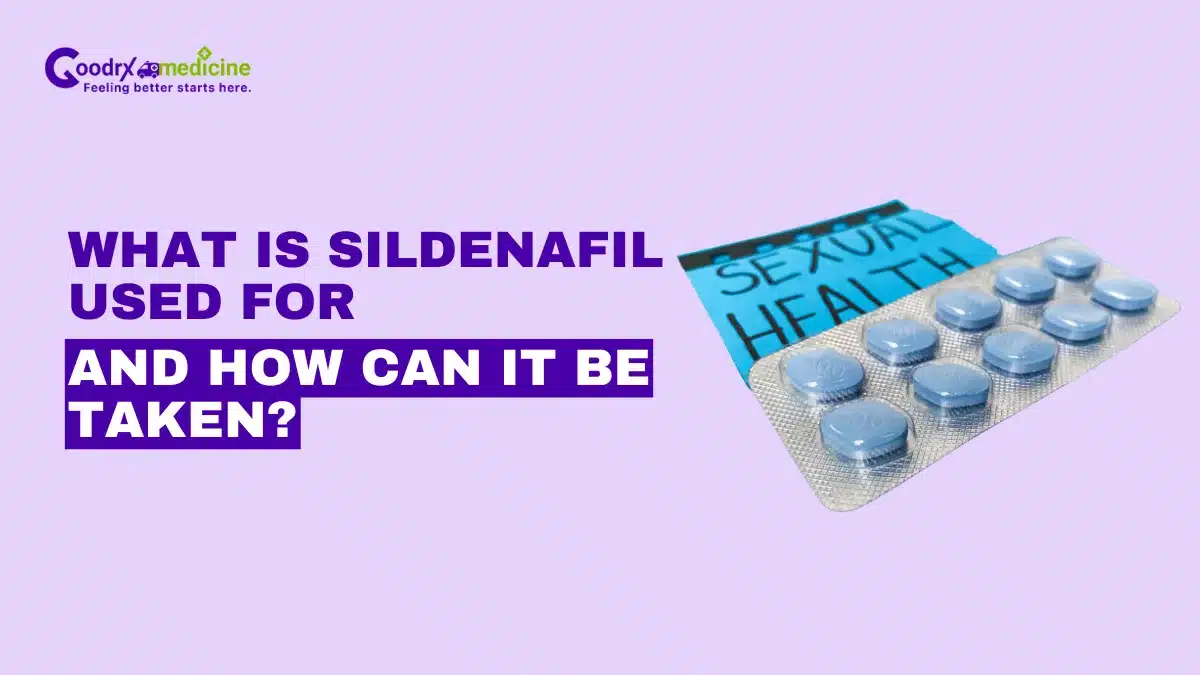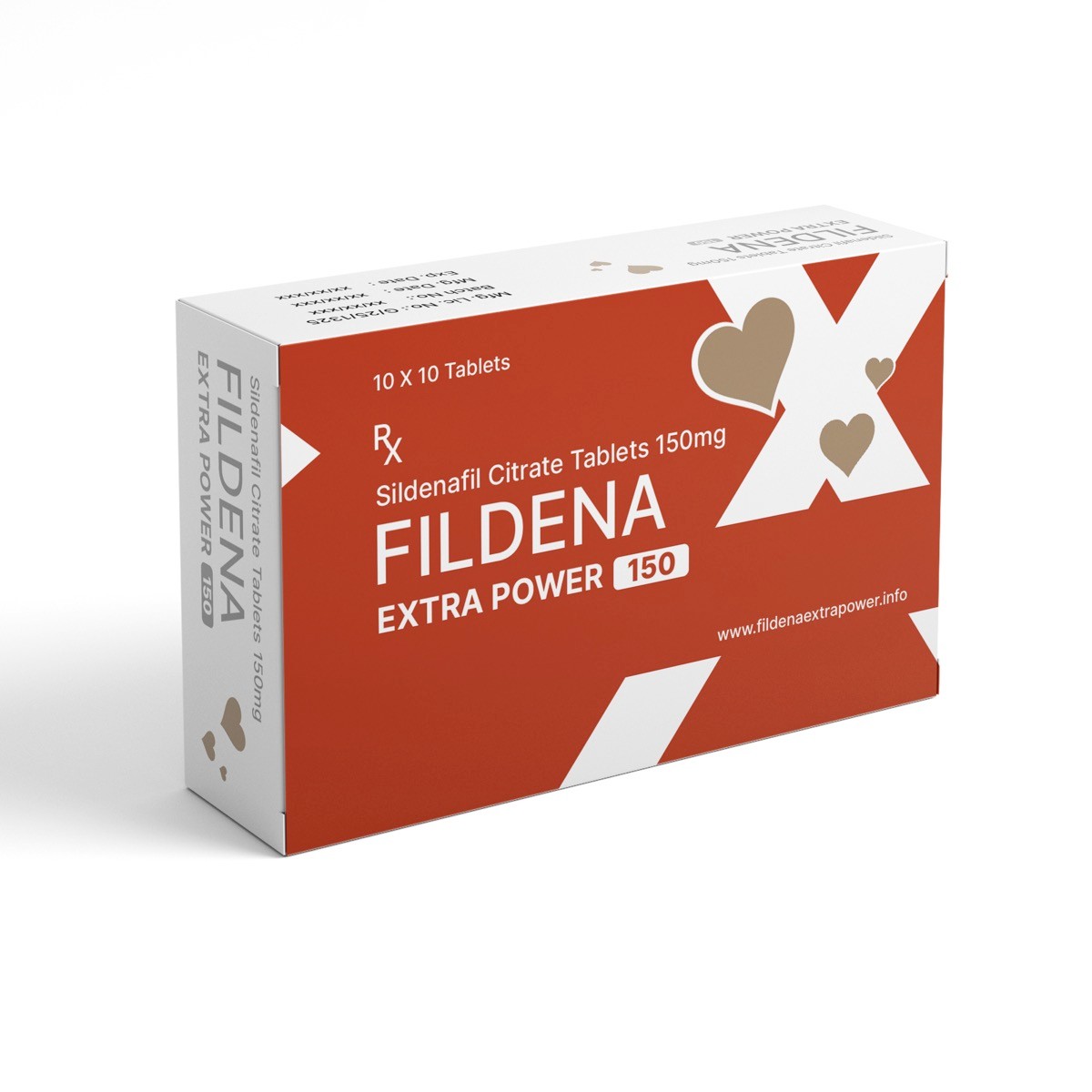Many people have heard of Sildenafil, particularly under the popular brand name Viagra, but few are aware of all the ways in which this medication might help. Sildenafil was initially intended to treat heart-related chest discomfort, but it quickly became well-known for its ability to aid men or Assigned Males at Birth (AMAB) with Erectile Dysfunction (ED).
However, that’s not its only use. Doctors also prescribe it for Pulmonary Arterial Hypertension (PAH), a severe lung disorder. It is an effective medication that, when utilized effectively, may improve one’s quality of life.
In this article, we will look at what is Sildenafil used for, how it works, and what precautions you should take to better understand this important medication before taking it.
What is Sildenafil used for?
Sildenafil is a popular prescription medicine used to improve symptoms of Erectile Dysfunction (ED) and Pulmonary Arterial Hypertension (PAH). Sildenafil, marketed as Viagra (for ED) and Revatio (for PAH), has been in clinical use since the late 1990s and has significantly improved the quality of life for millions of patients.
- Erectile Dysfunction (ED): This is the most popular and well-known use of Sildenafil. ED or impotence is the inability to get or maintain a hard enough erection for satisfying sexual intercourse. Sildenafil is a highly successful oral treatment for this problem, which helps a man get an erection when he is sexually aroused.
- Pulmonary Arterial Hypertension (PAH): Sildenafil has also been approved to treat PAH, a severe and progressive lung condition defined by High Blood Pressure in the blood arteries that connect the heart to the lungs. Sildenafil allows the heart to pump blood more easily, enhancing the patient’s capacity to exercise.
Other off-label uses of Sildenafil
While the primary applications include ED and PAH, Sildenafil has been investigated for additional disorders. However, its usage in these situations is usually off-label (it is not an FDA-approved medication, but a doctor may prescribe it based on current medical understanding). The off-label use of the medication includes:
- Raynaud’s phenomenon (Secondary): Sildenafil can be used to treat severe Ischemia (reduced blood flow) and ulceration in fingers and toes in persons with secondary Raynaud’s phenomenon. It aids in relaxing blood vessels and improving circulation.
- Altitude-induced Hypoxemia (High-Altitude Pulmonary Edema—HAPE): Sildenafil has shown potential in increasing exercise performance at high altitudes and treating High-altitude Pulmonary Edema, but it is not a first-line therapy, and its overall efficacy is currently being investigated.
How does Sildenafil work?
Sildenafil belongs to a family of medications known as Phosphodiesterase 5 (PDE5) inhibitors. Its mode of action for treating ED and PAH is based on boosting the effects of cyclic Guanosine Monophosphate (cGMP), a naturally occurring molecule in the body.
Now, let’s see how this magic pill works for both conditions.
For ED
When a man is sexually aroused, his body releases an organic compound called Nitric Oxide (NO) in the penis.
This causes the production of cGMP, a substance that relaxes penile smooth muscles and dilates blood vessels, enabling more blood to enter the erectile tissue. Sildenafil helps by inhibiting an enzyme called PDE5, which usually degrades cGMP.
Sildenafil prevents PDE5 from acting too rapidly, allowing cGMP to remain in the body longer, improving and maintaining the erection. However, Sildenafil does not immediately induce an erection. Sexual stimulation is still essential to activate the NO pathway and for the medicine to be effective.
For PAH
PAH causes the pulmonary blood arteries of the lungs to constrict, resulting in High Blood Pressure inside the lungs. This forces the heart to work harder to push blood through the lungs.
Sildenafil also inhibits PDE5 in smooth muscle cells found in the pulmonary blood arteries.
By relaxing these blood vessels, Sildenafil enhances blood supply to the lungs and decreases the strain on the heart. This, in turn, improves exercise capacity and delays clinical worsening.
Dosage and administration
The dose of Sildenafil varies significantly according to the condition being treated. Let’s look at the commonly prescribed dosage for ED and PAH separately.
For ED
To maximize the effectiveness of the medication, take Sildenafil precisely as prescribed by your doctor. Common dosage and usage guidelines are:
- For ED, Sildenafil is commonly available in 25 mg, 50 mg, and 100 mg pills.
- The normal beginning dose is 50 mg, taken orally around 1 hour before sexual activity. However, it can be consumed anywhere between 30 minutes and 4 hours before a sexual encounter.
- The medication should only be taken once in 24 hours.
- After consulting a doctor, the dosage can be changed based on efficacy and tolerability.
For PAH
Take Sildenafil in the following manner to reduce the symptoms of PAH:
- Sildenafil for PAH comes in many strengths and formats (tablets, oral solution, and injectable).
- The average adult dosage is 20 mg, given thrice a day.
- Doses for children are based on their weight and age.
- It is often taken with or without food.
- Following the suggested dosage schedule is essential, as the medication manages the condition but does not completely cure it.
Side effects
Besides being effective in treating ED and PAH, Sildenafil can lead to some potential side effects, including:
- Headache
- Hot flashes
- Dizziness
- Fatigue
- Indigestion
- Nausea
- Vomiting
- Nasal congestion
These side effects are usually mild and temporary and fade as your body gets used to the medication. However, in some rare cases, Sildenafil can cause some severe side effects, such as:
- Prolonged, painful erections (Priapism)
- Irregular heartbeat
- Sudden visual and hearing loss
If any of these side effects persist, contact your doctor immediately.
Safety precautions
The following safety measures should be taken while consuming Sildenafil to maximize the effectiveness of the pill or reduce the risk of any side effects:
- Always use Sildenafil with medical supervision, especially if you have heart, liver, or kidney problems.
- Do not combine Sildenafil with Nitrate medications (used for chest discomfort or cardiac issues) since this might result in a severe reduction in blood pressure.
- Do not consume grapefruit or its juice as it can interfere with how Sildenafil is absorbed in the body, thereby increasing adverse effects.
- Never drive or do any heavy machine work after taking the pill, as it can lead to dizziness, thus increasing the likelihood of accidents.
- Do not drink alcohol while taking the pill, as alcohol can cause dizziness, headaches, and Low Blood Pressure.

Conclusion
Sildenafil is a commonly prescribed and clinically established medicine for Erectile Dysfunction (ED) and Pulmonary Arterial Hypertension (PAH). Sildenafil considerably reduces these problems by increasing blood flow through blood vessel relaxation, improving physical function, and general quality of life.
In ED, it aids men in achieving and maintaining erections during sexual activity, whereas in PAH, it lessens the stress on the heart by reducing lung pressure. Although Sildenafil has proven benefits, it should only be used under medical supervision to minimize side effects or medication interactions.
Knowing what is Sildenafil used for enables patients and healthcare providers to make informed choices about its use.
Frequently Asked Questions
What is the difference between Sildenafil and Tadalafil?
Sildenafil and Tadalafil have different durations and onset. Sildenafil works 4-6 hours, but Tadalafil can last up to 36 hours. Tadalafil is also used to relieve symptoms of Benign Prostatic Hyperplasia and can be taken once a day or as needed, while Sildenafil does not have this advantage.
Is Sildenafil effective in treating female sexual dysfunction?
No. Sildenafil has had limited and inconsistent outcomes in women. While it may increase vaginal blood flow, its efficacy in treating female sexual arousal dysfunction is not well proven and is currently off-label.
Is it safe to use Sildenafil on a long-term basis?
Yes. When taken as directed, Sildenafil is typically safe for long-term usage. However, regular follow-up is required to check for adverse effects, particularly in older adults or those with underlying medical issues.
Can Sildenafil lead to dependency or addiction?
No. Sildenafil isn’t physically addictive. However, some users may develop psychological dependence, particularly if used without medical supervision or for performance rather than medicinal purposes. Hence, it is advisable to consult a doctor before using the pill.
Is Sildenafil effective in situations of Diabetes-related ED?
Yes, Sildenafil is generally helpful in treating u003ca href=u0022https://www.goodrxmedicine.com/blog/sexual-wellness/diabetes-and-erectile-dysfunction/u0022u003eDiabetes-induced Erectile Dysfunctionu003c/au003e since it improves blood flow regardless of the nerve or vascular damage that diabetic patients frequently experience. However, it is advisable to consult a doctor before considering the medication, especially if you have other underlying health issues.
When referencing outside resources, GoodrxMedicine always provides full citations. To learn more about the measures we use to maintain the quality of our content, please review our Content Information Policy.















